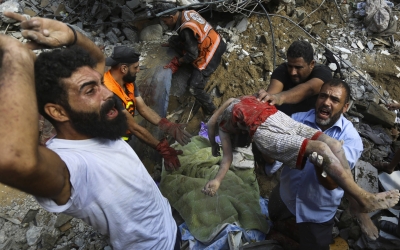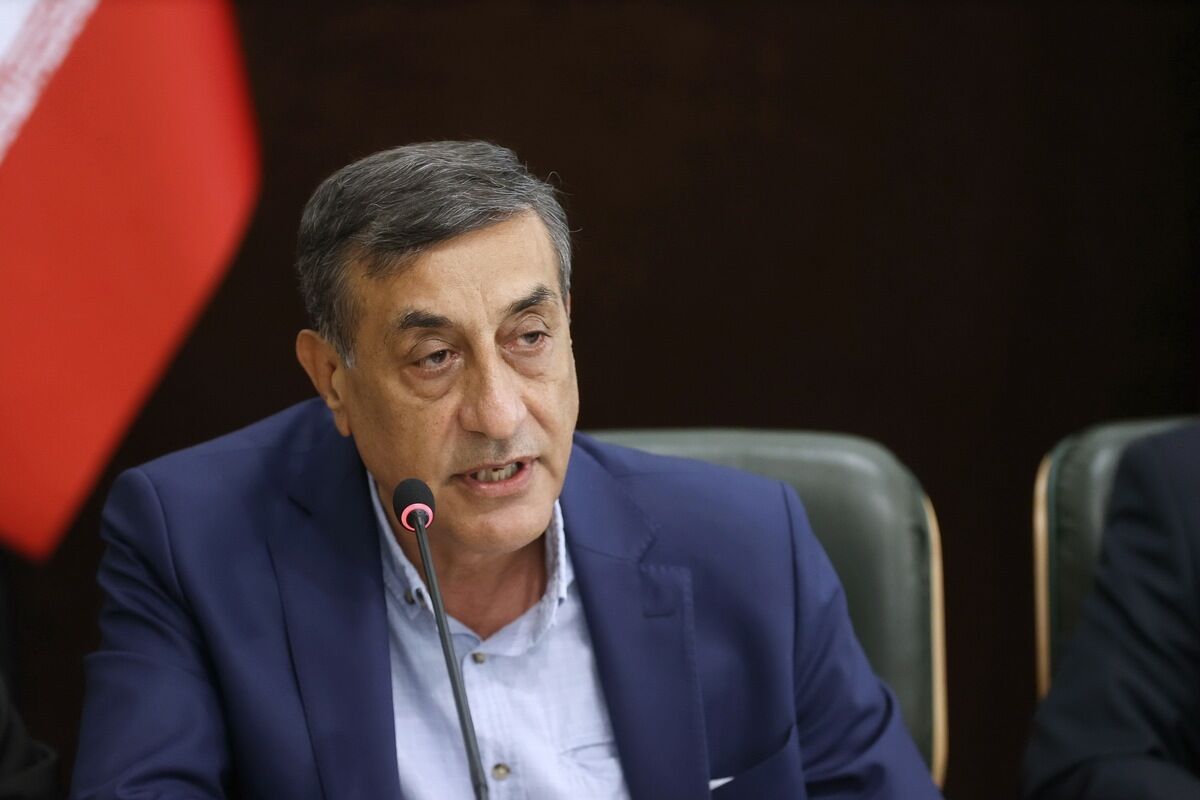'I searched for my father in the ruins': The plight of thousands buried under Gaza’s rubble
'I searched for my father in the ruins': The plight of thousands buried under Gaza’s rubble

As soon as Mohammed al-Banna heard that Israeli forces had withdrawn from eastern Gaza City in early August, he made his way there.
His father, Jehad al-Banna, had last been seen heading towards their home in the Shuja'iyya neighbourhood.
The neighbourhood had been classified as a dangerous zone, where Israeli forces had forcibly expelled residents and bombed anything that moved.
Jehad, who was taking temporary shelter elsewhere in Gaza City, decided to return to the area on 3 July, which was the last time the family saw him.
“Despite our attempts to stop him, he insisted on going to check on our home because of how deeply attached he was to it,” Mohammed told Middle East Eye.
“He left and never came back,” he said.
The Palestinian teenager tried to call his father repeatedly, but received no answer. Then came a call from a neighbour in the area who told him that the house had been bombed.
“That was when I began to feel intense fear for my father. I felt he had been inside the house when it was struck,” he recalled.
The family requested that the Civil Defence and the Red Cross reach the area, but they were denied access. The family posted appeals online and waited for any word, but none arrived.
“My family and I spent long days wondering about my father’s unknown fate, waiting for any call that might give us a glimmer of hope that he was still alive,” Mohammed said.
On 3 August, Israeli military vehicles pulled back from the area, allowing people to return for the first time in weeks.
Amid this vast devastation, the hopes of most who had lost loved ones – of finding them alive – evaporated, and they began a journey full of uncertainty to learn their fate.
“Along the way, many bodies lay on the street,” Mohammed said.
“Apparently, those who arrived earlier had found them in the middle of the street, and all they could do was move them aside.”
‘I looked for my father among the ruins’
Satellite images at the time showed that destruction in the neighbourhood had risen to 75 per cent of its total area.
When Mohammed reached his home, he was “shocked” to see it reduced to rubble.
“I looked for my father among the ruins of our house and found nothing,” he said.
Then he searched the destroyed streets and surrounding areas, but still found nothing. While inspecting a neighbouring destroyed house, he stumbled upon “one of the most heartbreaking scenes I have ever witnessed,” he continued.
“I found my father thrown by the force of the explosion into the neighbours’ house. I saw him with his dear body turned into remains… his body had decomposed, and nothing was left except his clothes and shoes.
“My beloved father, our teacher, our friend and our support, his body remained here alone for more than a month.”
'I am 15 years old, but I feel much older. I have been forced to bear and live through very difficult things alone'
- Mohammed al-Banna, Palestinian teenager
Despite the pain, Mohammed said he felt some relief at finding the body, burying his father and confirming his fate.
Some of Mohammed's neighbours found only scattered remains of their loved ones, sometimes hundreds of metres from their homes, he told MEE. Others told him he was fortunate to find and bury his father at all, as many children remain trapped under rubble.
His own grief is compounded by the loss of his sister and her family, killed in an Israeli strike.
While Civil Defence recovered their bodies, her eldest son, Mohammed's closest friend, remains buried deep beneath the ruins, unreachable without heavy machinery.
“He wasn’t just my sister’s son; he was like a brother,” Mohammed said. “We shared everything. Now he is still under the rubble, and I can’t bring him out or bury him.
“I am 15 years old, but I feel much older. I have been forced to bear and live through very difficult things alone.”
Slow recovery
Gaza authorities estimate that around 10,000 people remain trapped under the rubble across the devastated strip.
Many families had hoped the ceasefire signed last month would finally allow recovery efforts to begin, but ongoing Israeli violations and restrictions on the entry of heavy machinery have left the situation unchanged.
The process of recovering bodies has been “tragic and complex”, said Mahmoud Basal, spokesman for Gaza’s Civil Defence.
“We receive many appeals every day from families… but our difficult reality prevents us from doing our work,” he told MEE.
He said crews face enormous obstacles: vast destruction, huge quantities of rubble and, above all, the absence of heavy equipment, which makes most recovery work impossible.
According to the Palestinian Health Ministry, around 600 bodies have been recovered since the ceasefire came into effect last month.
A recent UN Development Programme report estimated there are 61m tonnes of rubble across Gaza, calling it an unprecedented challenge to any recovery or reconstruction effort.
With so many high-rise and multistorey buildings destroyed, Basal said, “We need massive capabilities to deal with the large numbers of missing people under the rubble.”
Basal said the crisis began in November 2023, when the Civil Defence was forced to suspend body-recovery operations, limiting its work to rescuing survivors or retrieving bodies that were easy to reach.
“The intense and continuous bombing prevented crews from dealing with all cases,” Basal said. Teams often had to withdraw from sites, apologising to families they could not help.
Even now, crews rely on primitive tools like shovels, pickaxes, hand carts, and even bare hands.
With official capacity crippled, many families have tried to recover bodies themselves. A new joint project with the Red Cross will use a single backhoe as a pilot effort to test whether more organised recovery can begin.
“The longer the calm continues, the fewer the missing will be,” Basal said.
However, he warned that repeated Israeli violations of the ceasefire will hamper recovery efforts.
“Every time military escalation returns, the number stays the same or increases.”













